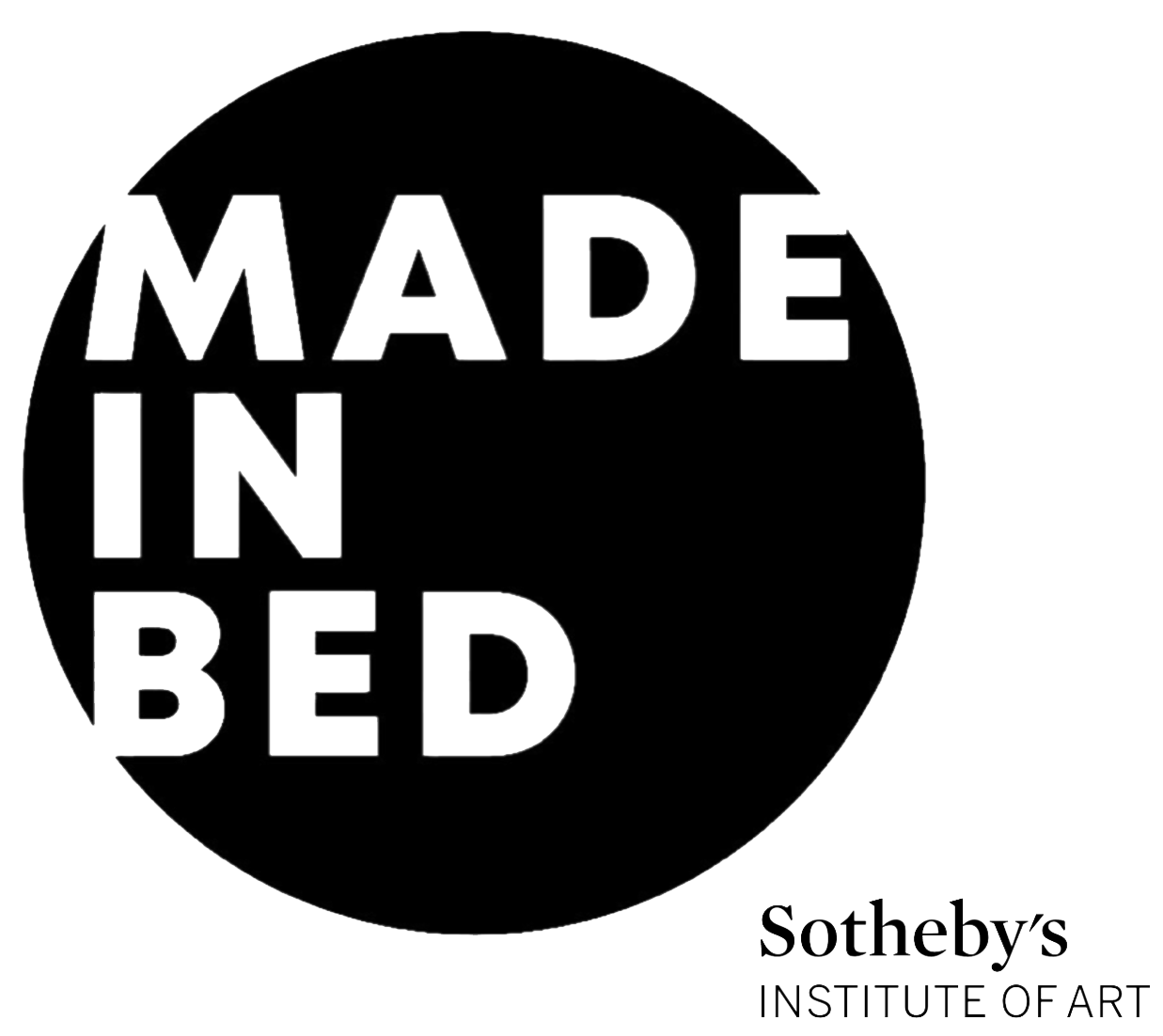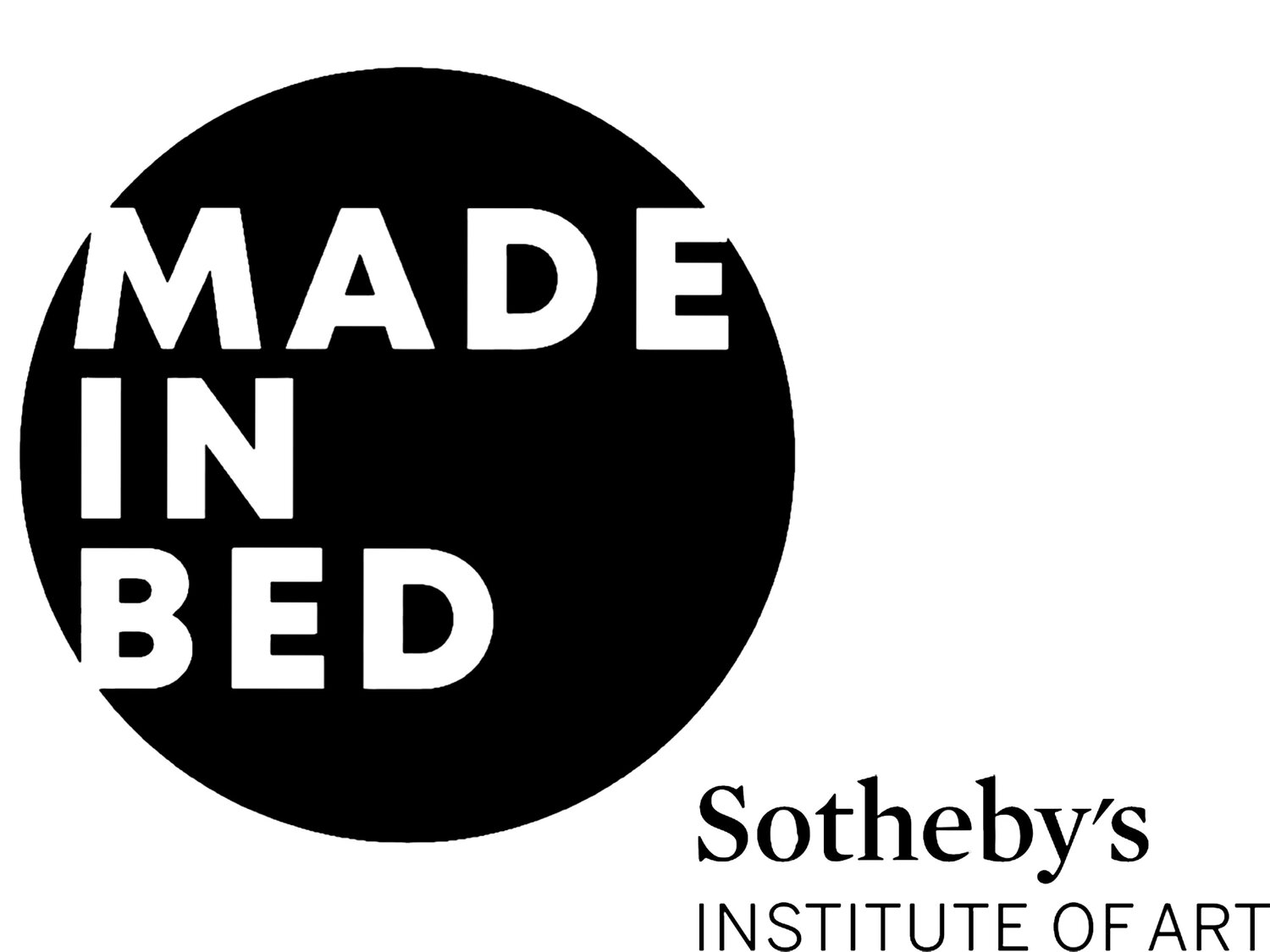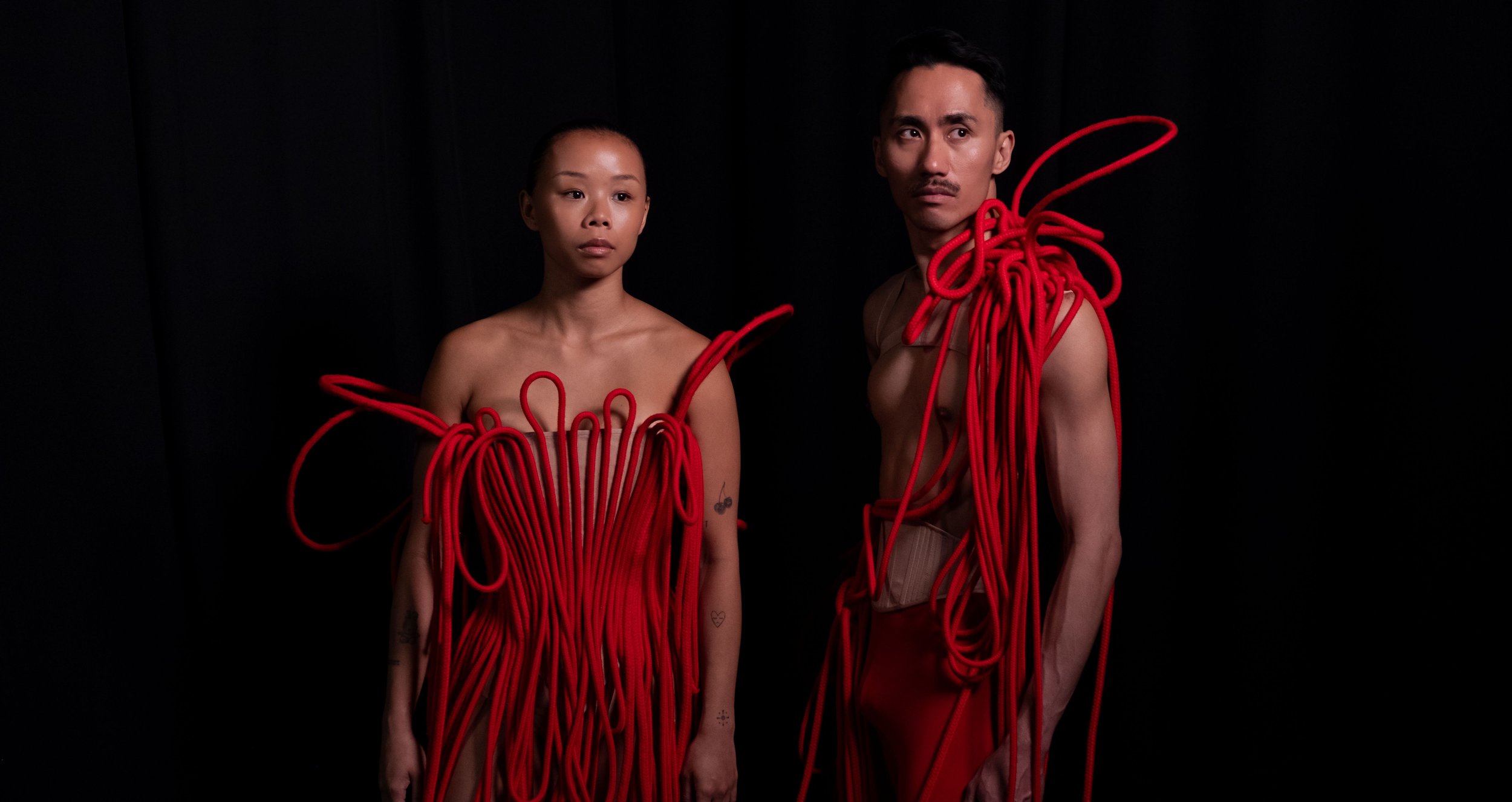Retrospective - Makiko Harris: ‘Needle Dance’ @ Art’otel London
Makiko Harris’s ‘Needle Dance’ at the Art’otel Hoxton is a multimedia exhibition that refuses to sit still. Part performance, part sculpture, part film: it exists in a state of constant movement—each element pulling you deeper into its world of tension, precision, and release. Harris, a trained ballet dancer, translates the language of the body into fabric, thread, and resin, creating works that feel both physically charged and emotionally raw. This is not art that simply hangs on walls—it stretches, it twists, it entangles, it breathes.
The artist in her studio. Photo Courtesy: Ben Pipe.
At the heart of ‘Needle Dance’ is a striking five-minute underwater film, a collaboration between Harris and director Peter Gray, known for his visually arresting work in Vogue and Harper’s Bazaar. The film features dancers drifting and contorting, bound by brilliant red rope. Their movements are fluid yet hindered, graceful yet strained—a metaphor for fate, feminism, and the invisible forces that shape our lives. The weightless suspension of the dancers mirrors the delicate balance Harris achieves in her sculptural and textile works: every motion is a push and pull between control and surrender.
‘Needle Dance’ Underwater Film Still. Photo Courtesy: the artist
From the moment you step into the gallery, the works command your attention. Towering needle sculptures loom over the space, evoking the tension of a seamstress’s craft, the precision of a surgeon’s stitch, or the discipline of a dancer’s form. Suspended textile forms hang in frozen motion, caught mid-dance, delicate yet forceful. The materials—threads, needles, silk, and resin—speak to both vulnerability and resilience, much like the body of a dancer. Harris’s background in ballet is palpable in every detail, from the deliberate tension of stretched fabric to the controlled chaos of erratic stitching. Her works are not just visual: they carry the weight of muscle memory, the discipline of repetition, the quiet ache of endurance.
Harris’s collaboration with costume designer Deborah Milner, known for her sculptural couture and work with Alexander McQueen, adds another layer to the exhibition’s interplay of movement and material. The costumes worn in the underwater film, sculpted and textural, further blur the boundaries between fashion, performance, and fine art. The dancers, wrapped in these intricate garments, become living extensions of Harris’s artistic language, their movements echoing the delicate yet unbreakable threads that run throughout the exhibition.
Colour, too, plays a vital role in ‘Needle Dance’. While much of the palette leans into muted, earthy tones, there are moments of vibrancy—deep crimsons and electric blues that feel almost visceral, like bursts of energy breaking through restraint. These ruptures of colour echo the unpredictability of movement itself—sometimes controlled, sometimes spontaneous, always charged with intention. The effect is haunting yet deeply human, reminiscent of the way a dancer’s body retains the marks of labour long after the performance ends.
Image Credit: Carlos Basilico
Beyond the visual, Harris incorporates an auditory element—a subtle soundscape of recorded breath, fabric tearing, and the rhythmic puncture of needle through cloth. It’s immersive without being overwhelming, reinforcing the intimacy of process and the weight of repetition. The steady pulse of stitching mirrors the cadence of a dancer’s footfalls across a stage, the rise and fall of breath between movements, the whispers of fabric brushing against skin. It is the sound of effort, of motion, of something coming into being.
What makes ‘Needle Dance’ so compelling is its refusal to settle into a single discipline. Harris seamlessly shifts between sculpture, performance, and painting with the fluidity of a dancer moving between choreography. This is not about static storytelling; it is about embodiment, about history embedded in movement, about the visceral experience of art in motion.
By integrating film, sculpture, and textiles, ‘Needle Dance’ challenges the boundaries of traditional exhibition formats. Harris’s use of red rope and underwater choreography underscores the exhibition’s meditation on entrapment and liberation, reminding viewers of the complex ties that bind us—physically, emotionally, and historically. It is a space where art is not just seen but felt through tension, through sound, through the echo of movement long after the gallery doors close. The entire show pulses with the ephemeral magic of performance: each stitch a step, each thread a line of choreography, each suspended form a body in motion. And like a dancer mid-performance, it lingers in the body, refusing to be easily forgotten.
‘Needle Dance’ concluded on the 2nd March, 2025. More information is available on the artist’s website here.
Nicole John
Reviews Co-Editor




